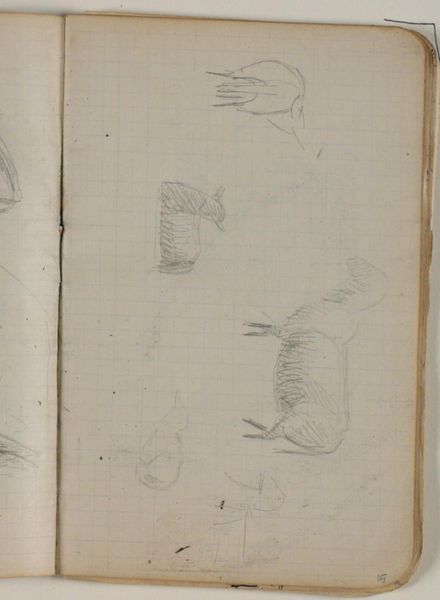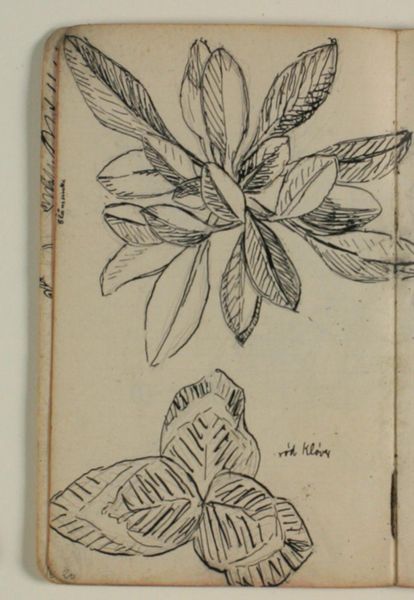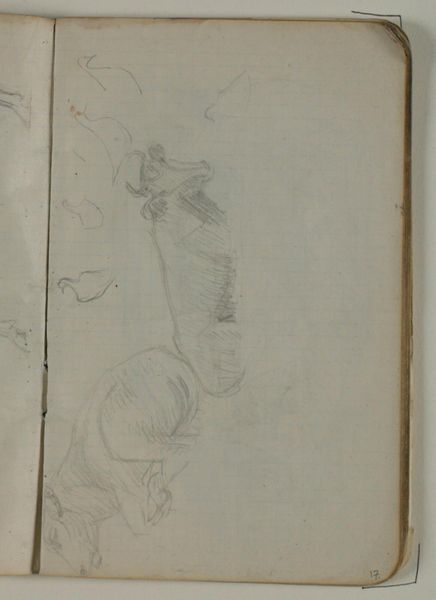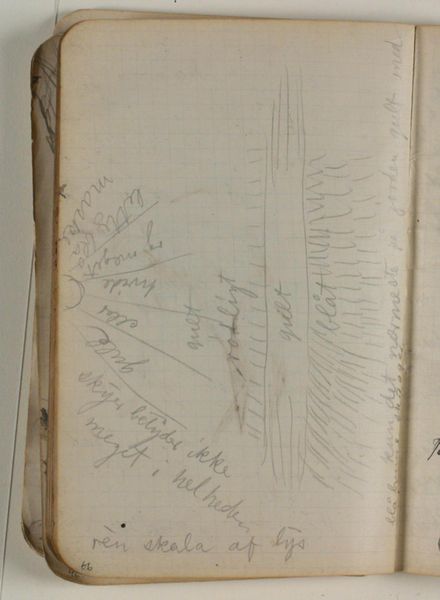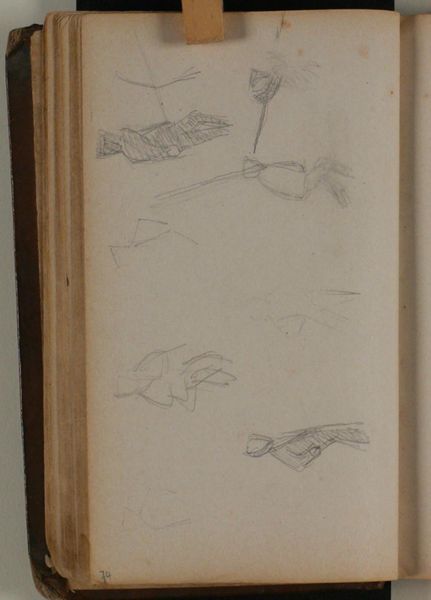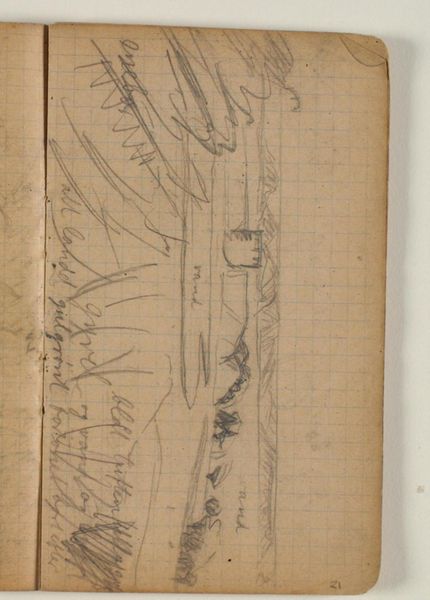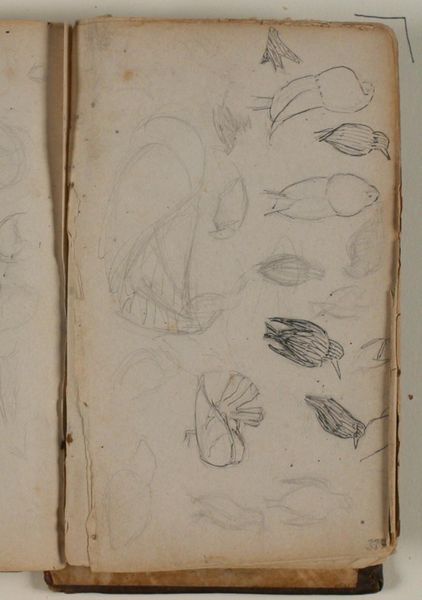
Dimensions: 169 mm (height) x 109 mm (width) x 5 mm (depth) (monteringsmaal), 169 mm (height) x 109 mm (width) (bladmaal)
Editor: We're looking at "Plantestudier," a drawing by Niels Larsen Stevns from between 1905 and 1907, housed at the SMK. It’s a pencil sketch on paper, quite simple in its execution, depicting foliage. What strikes me is the intimate, almost private, nature of a sketchbook study. What do you make of it? Curator: What I find interesting is its existence as a study, not a finished piece. It reveals something about the artistic process in the period, the artist's focus, and their relationship to the natural world. Consider how artists at the time were breaking from academic traditions. Did this sketching serve any greater artistic agenda? Editor: Potentially. I mean, it’s quite Impressionistic in style – capturing fleeting moments and impressions of nature. Was Stevns perhaps aiming to embrace more modern art styles and pushback against the institutions? Curator: Exactly. The impressionistic style here, while seemingly informal, reflects a specific set of artistic values circulating in academies and artists’ circles. The ‘sketch’ became a vital way for landscape painters to study visuality, a direct interaction with nature that could bypass the formal structures of earlier painting. It is also an argument about what ‘counts’ as art, as relevant and important. What might a rapid on-site sketch do, or capture, that a more polished, labored studio painting cannot? Editor: That makes me reconsider its purpose entirely. What initially appeared like a casual drawing is possibly a purposeful visual statement against tradition. Curator: Precisely! And its location within the SMK, the Danish National Gallery, makes it part of a larger conversation about national identity, art education, and the shifting definition of 'high' art. Editor: I hadn’t thought of it like that at all. It’s fascinating to see how this seemingly simple drawing opens up questions about art, process, and its place in society. Curator: Indeed, and remembering its initial function allows one to explore these questions to gain a better knowledge of its context.
Comments
No comments
Be the first to comment and join the conversation on the ultimate creative platform.
